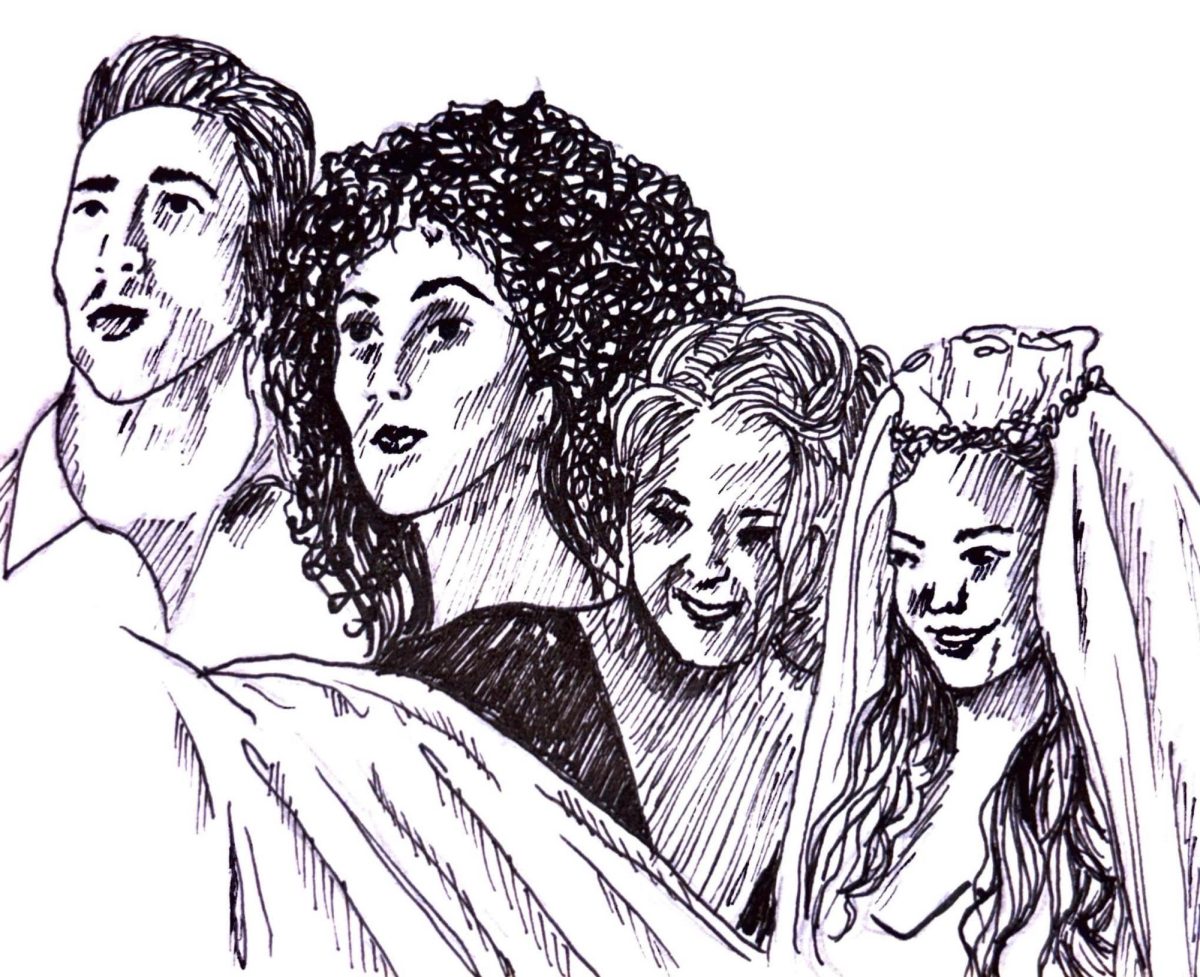Ever wonder what spooky urban legends best encapsulate what you’re studying? Below is a guide!
Art History: Kuchisake-onna (口裂け女, “Slit-Mouthed Woman”)
Art history majors are no strangers to complexity in storytelling, which is why the story of Kuchisake-onna, also known as the slit-mouthed woman, is the tale most fit for this major. Kuchisake-onna is a Japanese legend of a woman who covers her face with a mask and carries around a knife asking victims if they think she is pretty. If they reply “no,” she will kill them instantly. If they reply “yes,” she will then take off her mask to reveal her long smile and repeat the question. The only chance of survival is if the victim repeats that she is pretty, in which case Kuchisake will proceed to slit their mouth just like hers. At least you’ll both be smiling in the end, right?
Psychology: Nale Ba
Psychology majors are empathetic people attempting to understand not just others but their own troubled thoughts as well. In India, the tiny town of Karnataka is home to cautious villagers who write “Nale Ba” or “come tomorrow” on their walls in order to prevent a bridal ghost from entering their home, who is known for kidnapping men at night in search of her husband. The tale of Nale Ba inspired the 2018 Bollywood film, “Stree,” a comedy-horror about a ghost named Stree who is the cause of the disappearing men in town. How do we deal with bereavement when living alone is unbearable? Do we ever stop searching for fulfillment?
English: Topielec
Stuck in a false reality and unrealistic expectations they’ve set for others, English majors prolong their suffering by refusing to live in reality. The Topielec are Slavic water spirits who died by drowning and continue to dwell in the very environment they died. They spend their miserable days attempting to pull others into their suffering, much like an English major trying to force the rest of the world to see their delusions. How will you ever forget what’s hurt you, oh silly English major, if you’re still trying to build a life in the very spot you were killed?
Theatre: Maria Labo
Theatre majors bring to life the unimaginable, the unspoken, and challenge the norms we’ve established as a community. The story of Maria Labo, a Filipino aswang, or evil spirit, perfectly encapsulates the unrestrained theatre major. Maria Labo is infamous for inexplicably murdering her two children and eating them afterwards. When Maria’s husband inquired about the whereabouts of their children, she very earnestly admitted that she ate them. After her husband chastised her, she fled the house and never returned, wandering the streets kidnapping children to feed her sick, sick appetite.
Political Science: Cho-nyo-Gwishin (처녀귀신)
Oh, political science majors, always playing devil’s advocate and never finished with an argument, the Cho-nvo-Gwishin is the perfect match for you. The virginal Korean ghost, Cho-nyo-Gwishin, is the spirit of a person that has died without completing something that they must do. So they stay on earth to finish the task, no matter how long it takes, before moving on to the underworld. With a strong head and opinions, it can be easy for you, poli-sci major, to keep the argument going. But, no matter how much you want to, don’t be that Cho-nyo-Gwishin in the room (or risk staying forever).
Sociology/Anthropology: Chupacabras
Maintaining the status quo isn’t really your thing, is it? Well, it’s not the chupacabra’s thing either. Originating in Puerto Rico, this mythical creature’s name literally translates to “goat-sucker”, and they are known for draining their victims of all the blood in their bodies. This story is one of the most popular tales in the Americas. Widely known but hardly understood, this creature resembles the average sociology or anthropology major who strives to make their ideas heard but whose words fall flat on the ears of the audience.
Isn’t it music to your ears? The Shâd’havâr is a creature from Islamic legend with a horn made of 42 hollow branches that produce a pleasant sound, inviting animals to sit down and listen to the music. Consistent with the music major’s ability to make us feel a range of emotions, the horn of the Shâd’havâr can compel the listener to feel it all. When the horns of the creatures were played on one side, the music is cheerful and lively. However, when played on the other side, the music becomes sad and tears are shed.





